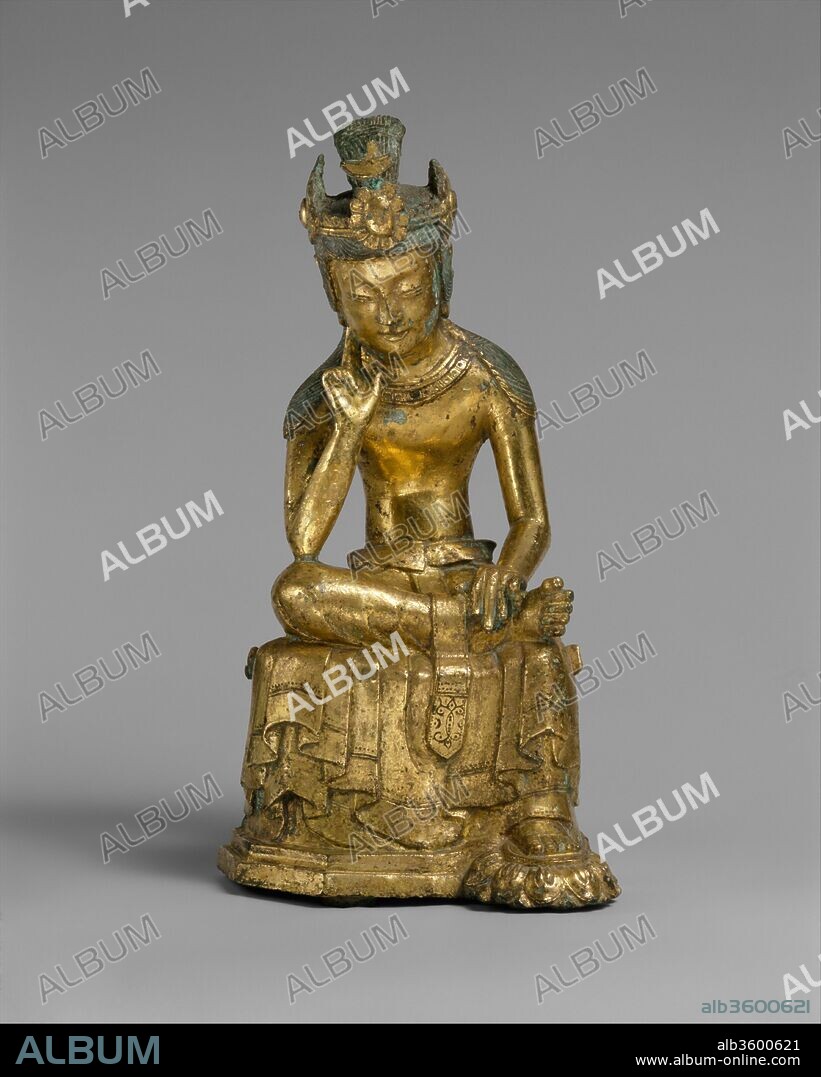alb3600621
Pensive bodhisattva

|
Añadir a otro lightbox |
|
Añadir a otro lightbox |



¿Ya tienes cuenta? Iniciar sesión
¿No tienes cuenta? Regístrate
Compra esta imagen.
Selecciona el uso:

Título:
Pensive bodhisattva
Descripción:
Traducción automática: Bodhisattva pensativo. Cultura: Corea. Dimensiones: H. 8 7/8 pulg. (22,5 cm); W. 4 pulg. (10,2 cm); D. 4 1/4 pulg. (10,8 cm). Fecha: mediados del siglo VII. Las imágenes del bodhisattva pensativo se hicieron frecuentes en el este de Asia entre los siglos quinto y octavo. En Corea, el tipo surgió como un importante ícono budista durante los siglos VI y VII, particularmente en los reinos de Baekje y Silla. Esta figura sentada es uno de los ejemplos mejor conservados. Está imbuido de una energía sutil pero palpable que se articula en detalles tales como los dedos de manos y pies flexibles y realistas. Su corona está rematada con un motivo de orbe y media luna, lo que indica la influencia de Asia Central.
Pensive bodhisattva. Culture: Korea. Dimensions: H. 8 7/8 in. (22.5 cm); W. 4 in. (10.2 cm); D. 4 1/4 in. (10.8 cm). Date: mid-7th century.
Images of the pensive bodhisattva became prevalent in East Asia between the fifth and eighth centuries. In Korea, the type emerged as an important Buddhist icon during the sixth and seventh centuries, particularly in the kingdoms of Baekje and Silla. This seated figure is among the best-preserved examples. It is infused with a subtle yet palpable energy that is articulated in such details as the pliant and lifelike fingers and toes. His crown is topped with an orb-and-crescent motif, indicating Central Asian influence.
Técnica/material:
gilt bronze
Periodo:
Three Kingdoms period (57 B. C. -A. D. 676)
Museo:
Metropolitan Museum of Art, New York, USA
Crédito:
Album / Metropolitan Museum of Art, NY
Autorizaciones:
Tamaño imagen:
3282 x 4094 px | 38.4 MB
Tamaño impresión:
27.8 x 34.7 cm | 10.9 x 13.6 in (300 dpi)
Palabras clave:
ALEACIÓN DE COBRE • ARTE ASIATICO • ASIA • BRONCE DORADO • BRONCE • BRONZE • COREA • DORADO • ESCULTURA • METAL • METROPOLITAN MUSEUM OF ART, NEW YORK, USA • OBRA DE BRONCE • PLATO
 Pinterest
Pinterest Twitter
Twitter Facebook
Facebook Copiar enlace
Copiar enlace Email
Email
